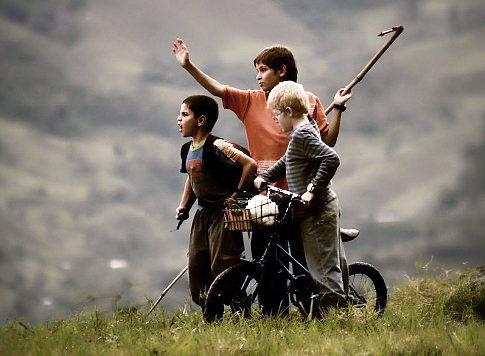It is springtime in New York, the time of the year in which, along with the trees and the flowers, many film festivals bloom all over the city.
Without a doubt one of the most interesting of these is the Havana Film Festival New York, which during its 12 years of existence has carved a place in the city’s cultural landscape. For New Yorkers worried about the anemic economy, the three wars the U.S. is currently involved in, and the Democratic, Republican and Tea Party madness in Washington, the variety of the films featured at the festival should be a breath of fresh air.
From an artistic perspective, the festival is a big deal. More than 50 films from and about Latin America will be featured, many of which, despite their quality, would have never been shown commercially.
Eighteen countries are represented, including Argentina, Brazil, Chile, Colombia, Costa Rica, Cuba, the Dominican Republic, Ecuador, Guatemala, Honduras, El Salvador, Mexico, Panama, Peru, Venezuela and the U.S. They span a spectrum of genres and themes, from comedy, thrillers, action and drama to documentaries, children’s tales, and gay and lesbian topics.
The festival begins tomorrow – with an opening night gala and private screening – and runs through April 15. It is part of the ¡Sí Cuba! Festival, a month-long, citywide celebration of Cuban arts and culture (see www.SiCuba.org).
This year, the festival will pay tribute to acclaimed Cuban director Gerardo Chijona on Friday with the New York premiere of his most recent film, “Boleto al Paraíso/Ticket to Paradise,” which had its world premiere at the Sundance Film Festival.
One of the festival’s high points is sure to be the U.S. premiere of “Operation Peter Pan: Flying Back to Cuba,” directed by New York-based Estela Bravo. The dramatic story of 14,000 unaccompanied Cuban children who were sent by their parents to the U.S. between 1960 and 1964 to “save them from the Revolution” will be shown Sunday at 5:30 p.m. at the Quad Cinema, 34 W. 13th St., Manhattan.
Another highlight will be the New York premiere of “Afinidades,” about two couples who engage in adventurous sexcapades. It marks the directing debuts of beloved Cuban actors Jorge Perugorría and Vladimir Cruz and will be shown April 12 at 8:45 p.m. at the Quad.
Still another film bound to attract attention is “Los Colores de la Montaña” (“The Colors of the Mountain”). In one pivotal scene, a youth’s soccer ball is kicked into a minefield, a prelude to armed conflict that will affect the lives of the inhabitants of the Colombian town of La Pradera. It will be shown Friday at 7 p.m. at the Museum of the Moving Image, 35th Ave. at 37th St.,Astoria.
The presentation of a very unusual compilation of films made by or about indigenous groups in Mexico, Guatemala, Chile and Colombia, which showcase their emerging voices, will be another festival highlight.
“Every year we program films that talk about the indigenous peoples from Latin America, but this year we wanted to have films made by native filmmakers. We were impressed by films made by Mayan and Totonacan filmmakers,” said Diana Vargas, the festival’s artistic director.
For the second year, 21 films will compete for the Havana Star Prize in the categories of Best Film, Best Director and Best Screenplay, and for the first time for Best Documentary. The winners will be announced on the closing night at the New York Directors Guild Theatre.
The Havana Film Festival New York is a project of the nonprofit American Friends of the Ludwig Foundation of Cuba, which, says its president, Carole Rosenberg, works to build cultural bridges between the U.S. and Cuba through the arts.
DAILY NEWS
ALBOR RUIZ – NY LOCAL




